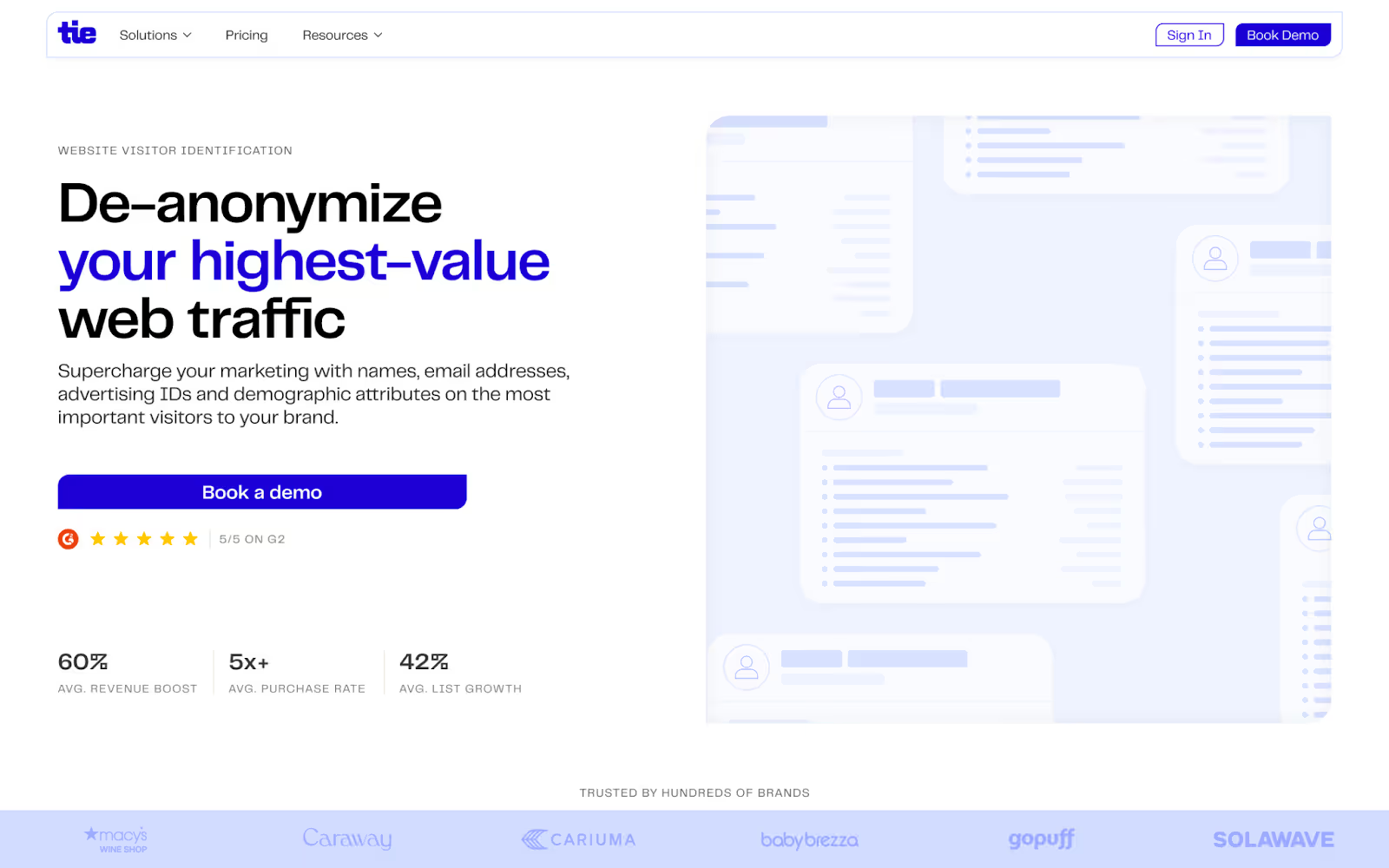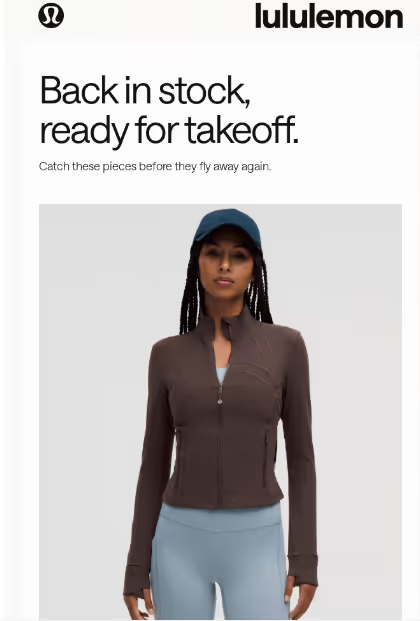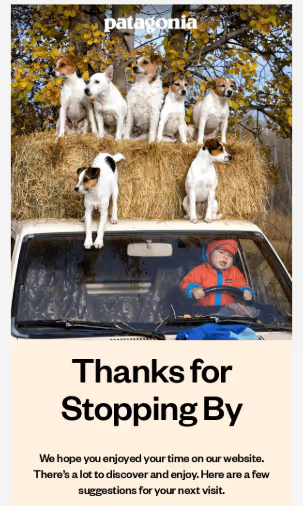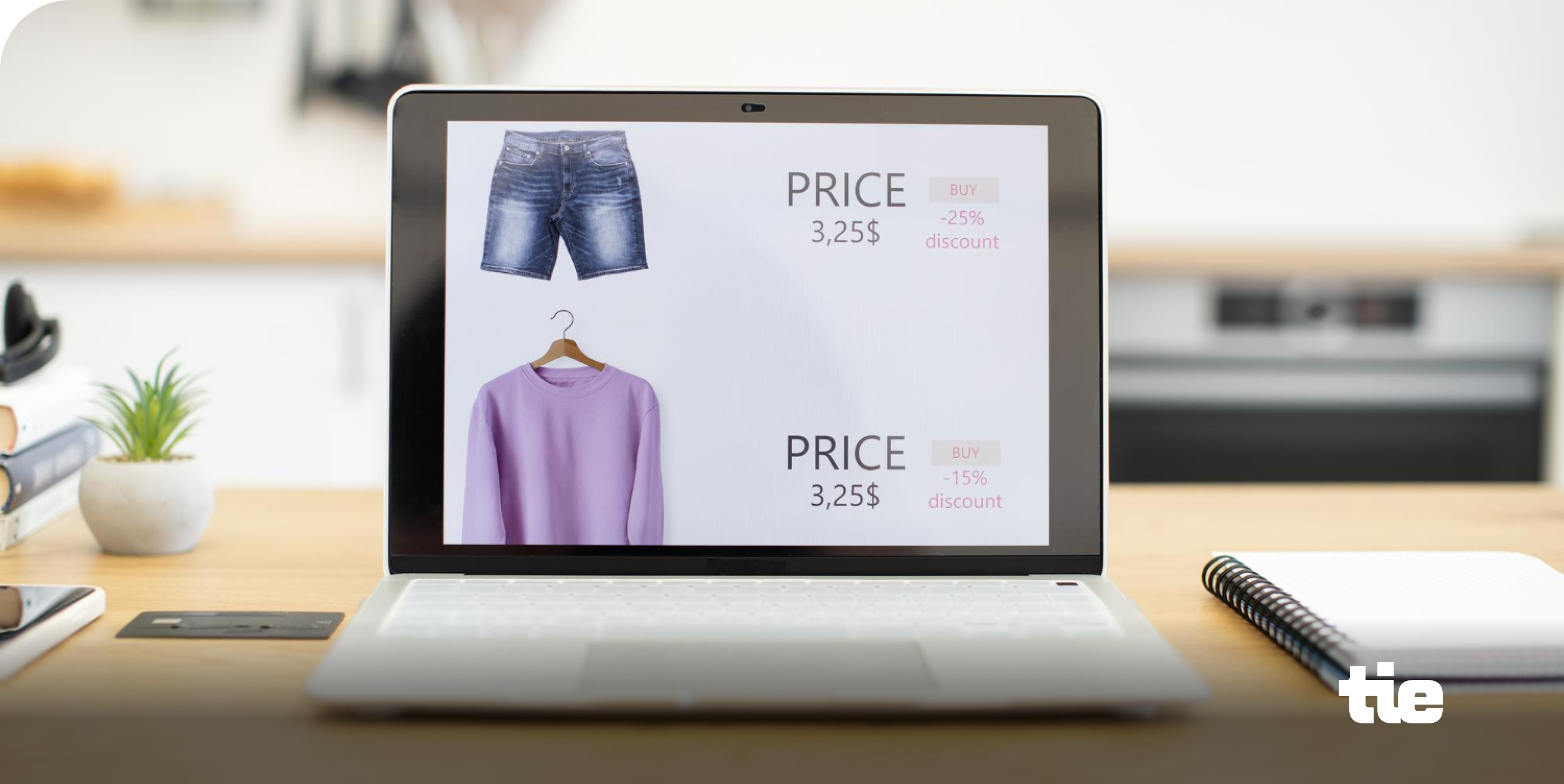How to Increase Customer Retention with Better Data
.avif)
For ecommerce brands, competition is fiercer than ever. In 2023, the U.S. alone. had 110K+ DTC companies, making it harder than ever to stand out while growing sustainably.
With so many brands competing for attention, focusing solely on customer acquisition doesn’t cut it anymore. It requires big budgets that don’t deliver long-term revenue.
Instead, successful brands are prioritizing retention, leveraging customer data to create personalized experiences that increase customer lifetime value.
Your customer data is the foundation of your growth. But, challenges like data fragmentation and dependency on third-party data prevent you from understanding customers and building long-term relationships.
In this blog, we’ll explore how customer retention can help your ecommerce brand grow and five data-driven strategies to help you increase repeat purchases and drive profits.
Why customer retention matters more than ever for DTC brands
Customer acquisition costs have increased by 60%. Here’s why acquiring new customers is harder:
- Increased restriction on third-party cookies: Browser restrictions and privacy updates limit cross-site tracking, making third-party data less effective and harder to retarget potential buyers.
- Impact of iOS 14.5 on paid social: Apple devices require apps to get user consent before tracking their interactions. Since most users opt out, Facebook and Instagram ads have lost visibility into user behavior, affecting ad performance.
- Rising ad costs: There’s more competition now than ever before, driving up the costs of running paid acquisition campaigns.
- Stricter privacy legislation: CCPA and GDPR limit you from collecting and leveraging personal data without explicit consent. Due to this, brands have less access to data, reducing the effectiveness of audience segmentation and targeted advertising.
Brands that focus solely on customer acquisition are missing out on bringing back customers who have bought and enjoyed their products. This is why a smarter and more cost-effective strategy for ecommerce brands is to prioritize customer retention rates. This has several benefits, including:
- You’ve already won over these customers. Effectively re-engaging them drives repeat purchases, maximizing customer lifetime value (LTV) and extending the average customer lifecycle.
- It reduces your dependency on paid ads while bringing in revenue through less expensive strategies. In short, higher retention = lower CAC = higher profit margins.
- Customer retention strategies tap into loyalty. Since past customers already trust your brand, they are less price-sensitive. This gives you more opportunities for upselling new products and cross-selling based on past purchases.
- Word-of-mouth marketing is easier when you have loyal customers excited about your brand, boosting brand advocacy and organic customer acquisition.
Data-driven strategies to increase customer retention (with examples)
Many DTC brands often fail to drive sustainable and positive results with their retention tactics — and the primary reason for this is poor customer data. Reduced access to reliable third-party data, fragmented insights, and lack of centralization make it difficult to effectively leverage data for better retention efforts.
But getting your data to work for you is all about the right approach and tool. Here are five practical strategies that let you leverage your business data to increase retention.
1. Use audience enrichment to fix data gaps and fragmentation
One of the leading causes of ineffective customer retention strategies is data fragmentation. This happens when customer data is scattered across different channels and tools.
DTC brands have an omnichannel approach, using social media, websites, and third-party marketplaces to promote and sell their products. Due to this, it’s difficult to centralize customer data across these multiple channels, create a unified customer profile, and map accurate lifecycle stages of customers.
Suppose a customer normally buys your products from your TikTok Shop. But, their most recent purchase was made directly from your website, recording them as two separate shoppers. If your system treats these as separate shoppers, your automated flows might send irrelevant messaging, leading to a disconnected experience that weakens your retention efforts.
Another problem that brands face is information gaps. Missing data and insights into customers is common but these gaps make it hard for you to personalize retention strategies for your customers.
For instance, knowing whether a customer is single, married, or has children can help you tailor your messaging and recommendations. This type of data is never captured through standard purchase behavior, making it a lost opportunity for your brand.
You can fix fragmented and missing data by centralizing and enriching it with the support of specialized data enrichment partners like Tie.
These data enrichment partners blend first-party and third-party data from their data network to build complete customer profiles that serve as the foundation for segmentation and personalized retention efforts (two strategies outlined below).
When your data is enriched with behavioral patterns, preferences, and past interactions, you can:
- Identify customer segments: Understand which products certain customer segments frequently buy together, which customers are most likely to repurchase soon, and other key customer lifecycle stages to set up precise segmentation strategies that drive more sales.
- Personalize recommendations: Analyze purchasing and browsing behavior to predict what customers are most likely to buy on their next visit, tailoring your recommendations to nudge them to return to your store faster.
- Timely re-engagement: Capture micro-moments (brief, high-intent interactions customers have with your brand) and buying intent to send well-timed, personalized email flows. For instance, a brand could retarget a past customer who repurchases every 6 weeks with an ad reminding them to stock up.
Book a demo with Tie to unlock enriched customer insights today!

💡 Pro-tip: Combine your audience enrichment efforts with zero-party data from customer surveys. Run surveys to get direct insights into customer needs, pain points, preferences, and expectations. This supports your personalization efforts and improves retention.
2. Leverage enriched data to create customer segments
One of the biggest challenges for DTC brands is turning anonymous web behavior into actionable insights. By matching anonymous site visitors with known customer profiles, you gain the depth needed to segment users based on their lifecycle stage and buying intent, without relying soley on basic web interactions.
With clearer visibility into who your customers are and what they’re likely to do next, you can create precise segments that power targeted retention strategies.
Here are some segments you can create based on the customer’s lifecycle stage or their intent:
- New customers: First-time buyers.
- Active repeat customers: Loyal customers who buy regularly.
- Casual browsers: Shoppers who keep visiting your site but haven’t bought yet.
- Inactive buyers: Customers who haven’t returned in 60-90 days.
- Cart abandoners: Customers who added items to their cart but didn’t buy yet.
- At-risk customers: Shoppers showing signs of disengagement, like low email open rates.
- High-value customers: Top spenders who you can nurture for premium or newly launched products.
- Deal seekers: Customers who shop during sales or by availing a discount on their order.
- Potential advocates: Customers who enjoy your products (based on feedback or repeated purchases) but haven’t shared reviews or referrals.
Segmenting by intent allows you to create highly targeted email flows with offers and messaging tailored to nudge customers toward their next purchase, while still maintianing high deliverability and avoiding unsubscribes.
Want to understand how data enrichment improves segmentation in practice?
Awe, an ecommerce jewelry brand, struggled to identify and engage anonymous site visitors. By using Tie, they were able to:
- Match anonymous visitors to known customer profiles, enriching their data with third-party insights.
- Segment customer by lifecycle stage and buying intent, leading to more precise email flows.
- Retarget over half of their site visitors during peak times, resulting in a $143K+ revenue lift from 300+ identified customers.
With the right data tools, you can shift from broad segmentation to intent-driven targeting, leading to stronger retention and higher lifetime value.
3. Set up personalized email flows that convert
Personalized emails drive 29% higher open rates and 41% higher click-through rates than generic emails.
Since your enriched data now gives you a complete customer profile, you can use your insights like unique demographic details, product preferences, intent, and browsing and purchasing behavior to tailor messaging that is relevant enough for shoppers to eagerly click on.
The result? Your repeat purchases and LTV increase, and so does your profitability.
Here are 5 ways you can double down on personalized email marketing with customer segments:
- Craft welcome email flows to convert first-time buyers into repeat purchasers. Talk about the story behind your brand and your customer loyalty program, and even share how to best use your products. Welcome emails are a great opportunity to engage customers and foster a relationship with them.
- Promote location-specific offers. For instance, share updates about your retail store with shoppers located in the same region. If you run state-specific offers, promote these with shoppers located in those states, ensuring that you activate them at the right time.
- Send emails based on gender, tailoring your product recommendations for your male and female audiences separately.
- Build loyalty sequences to reward repeat buyers and keep bringing them back. Thank them for their continued support, update them about the exciting points they’ve earned, and offer exclusive early access to new collections or limited-edition drops.
- Send win-back emails to inactive customers. Tap into your data to see why they stopped buying from you in the first place. See if the customer has previously complained about some issues. Were there frequent returns or cart abandonments? Use this insight to tailor your messages to inactive customers accordingly.
Personalization doesn’t just stop at segment-based messaging. Test, analyze, and optimize your existing strategy to maximize conversions for your retention strategies:
- Understand what resonates with customers best through past emails to craft better messaging. Run A/B tests for subject lines, email timing, and offers. Blend your insights from this experiment with first-party data to craft subject lines that increase open rates and engaging email content that customers want to read and click on.
- Run multiple test campaigns to understand which kinds of email sequences work best with your audience:
- Which tactics in your win-back emails are effectively bringing back your inactive customers?
- Are personalized post-purchase follow-ups increasing upselling rates?
- Which kinds of offers in your emails to loyal customers are increasing purchasing frequency, brand loyalty, and AOV?
Suppose you find out that a customer stopped buying from you due to shipping costs. You can send them a personalized email, offering free shipping to bring them back.
Or maybe their favorite product went out of stock, and they didn’t return to check. In that case, you can send a restocking alert, just like Lululemon does.

4. Optimize post-purchase engagement to encourage repeat orders
What happens after checkout? Most DTC brands fail to nurture customer relationships after a purchase is complete.
Remember, you want them to come back! So, it’s crucial to treat the first purchase as the beginning of a long-term relationship.
Build a rapport with customers with an optimized post-purchase customer engagement strategy and personalized follow-ups. Here are 5 ways to deliver a memorable post-purchase experience to shoppers:
- Set up automated thank you emails right after a first purchase.
For example, here’s how Patagonia sends post-purchase emails.

- Simplify order updates with a real-time tracking link to relieve anxiety. This goes a long way to satisfy a new customer, showing them how easy you make it for them to stay informed and build trust in your brand.
- Share tips on how to use your product, giving them value without any additional ask. Suggest complementary products based on their browsing behavior and popular bundle pairings from other customers. This enhances the experience for your new customer and drives repeat purchases.
For example, if you run a skincare brand and a customer buys your Salicylic Acid serum, you can share a video showing them how to use it properly. Educate them about best practices, such as applying it at night after cleansing and layering it with a niacinamide serum and night cream. This also lets you subtly plug your products.
- Offer loyalty points and discounts after the first purchase. Let them know about any additional rewards they can win if they continue shopping with your brand.
- Ask for customer feedback with follow-up emails. This shows that your customer success team is dedicated to making their experience better, increasing customer satisfaction and retention.
5. Reward your most valuable customers (without decreasing margins)
Offering discounts is sometimes used as a quick fix for retention. It may offer instant gratification, but customers won’t see a long-term incentive there.
It’s better to reward their loyalty with alternative methods that build trust and help your bottom line:
- Set a tiered loyalty program to reward shoppers. Let customers redeem their loyalty points, giving repeat purchasers a better deal on their orders because of their continued support of your brand.
- Set up a referral program to incentivize word-of-mouth marketing, letting brand advocates refer friends in exchange for store credits or even cash-back rewards.
- Offer product customization options for your VIP-level customers.
- Host exclusive events for your loyal shoppers, giving them an immersive experience that makes them feel valued.
- Offer early access to new products and limited stocks. Ensure that they are aligned with the customer’s preferences.
For example, Riven, an ecommerce brand selling probiotic mouthwash, sends emails to notify its most loyal customers about limited stocks.

Ready to improve your customer retention strategies with better data?
Many DTC brands rely on the same old tactics, like generic discounts, without understanding what customers want from them. They usually don’t have a complete view of their customers, making it difficult to effectively resonate with them.
But, when optimized, your data is packed with insights into how you can personalize your approach to your customers, engage them better, increase customer satisfaction, and drive repeat purchases.
This is where Tie helps you. Our platform collects and centralizes first-party data from all your channels and enriches it with third-party data from our data networks to build a complete customer profile. You can then use this to identify different customer segments, prioritize your best customers, and run retargeting campaigns that convert.
Turn your fragmented customer data into actionable retention strategies. Book a demo of Tie today!
Frequently asked questions
What’s a good repeat purchase rate for a DTC brand?
On average, a repeat purchase rate of 20-30% is considered healthy for a DTC brand. However, this rate differs based on the type of products you are selling. For instance, brands selling larger appliances see fewer repeat purchases.
How can I track retention if I don’t have a data team?
You can effectively track retention even if you don’t have a data team with the right tool in place. AI-powered analytics tools automate the process for you, collecting, analyzing, and visualizing your data all in one place. Depending on the tool you use, you can get actionable insights and recommendations that help you improve your marketing strategy, identify customer behavior patterns, and optimize your retention strategies.
How can small businesses boost customer retention?
Small businesses can boost customer retention rates by prioritizing service, positive experience on-site, and personalization:
- Deliver exceptional customer support. Your competitor may beat you at discounts, but you can stand out with top-tier service. Train your team to be responsive, proactive, and helpful, and use detailed customer profiles to personalize interactions.
- Ask for feedback from current customers to identify areas of improvement and work on them proactively. Keep customers informed to build trust with them and show them how much you value them.
- Simplify order management with real-time tracking updates sent through email or SMS.
- Make your returns as easy as possible and set up internal systems to process return requests quickly and refund customers faster.
- Invest in email automation to send personalized follow-ups, story-driven content, and special offers.
- Leverage your existing customer base. Ask loyal customers for referrals to drive word-of-mouth and bring in new visitors who are sure to trust your brand and convert into customers.






